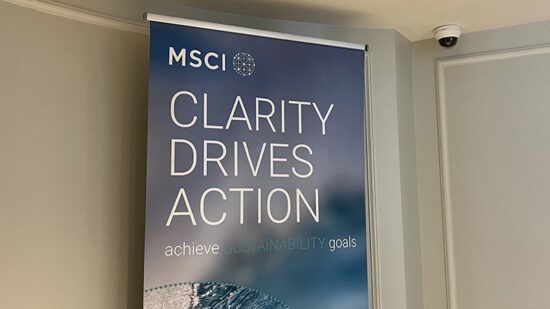In the evolving landscape of financial policy setting, the notion of double materiality is taking centre stage, which raises a pressing question: Can the pursuit of profits be truly compatible with addressing societal and environmental challenges?
This concept underpins a growing number of regulatory frameworks aimed at aligning economic growth with positive sustainability outcomes, suggesting a model where investments yield robust financial returns while driving societal and environmental improvements. The Hong Kong Monetary Authority is the latest to launch a taxonomy for sustainable finance.1
Understanding the concept
Global financial systems are increasingly integrating sustainability and financial objectives in response to issues like climate change, deforestation, biodiversity loss and social inequity. This emerging paradigm, captured by the term “double materiality,” proposes that profitability and sustainability practices can mutually enhance one another. However, this concept faces significant practical, philosophical and political challenges.
See also: – Previous articles by Andrew Parry.
The case for sustainable economic growth
Proponents of sustainable economic growth advocate for “decoupling,” the idea that economic expansion can occur without inflicting environmental harm. With the right technological innovations and efficiencies, it is possible to reduce or eliminate environmental impact while maintaining economic growth. The UK’s decarbonisation of electricity production, with the transition from coal to offshore wind energy and natural gas, demonstrates it is possible to reduce environmental impacts while maintaining economic growth.
Ville Lädhe, in his recent essay for Aeon Weekly, articulates this possibility, stating, “There are surely ecological problems, but they are not insurmountable. Just like the ‘dark Satanic Mills’ were cleaned, just like ozone depletion was overcome, any and all environmental problems will be resolved with growth, not without it”. This reflects a broader conviction in the power of innovation to reconcile economic and environmental objectives.
Critiques of decoupling
However, as Lädhe discusses, the decoupling narrative faces criticism from those who argue evidence supporting a complete separation of economic growth from environmental impact is limited and often misleading. Those advocating for a contentious “degrowth” approach argue the apparent decoupling in some economies often masks a transfer of environmental damage to less visible sectors or regions. Efficiency improvements often fail to keep pace with growth, leading to continued resource depletion. Sustainability is about absolute reductions, not relative success, in their view.
The current political climate underscores the challenge of moving away from extractive forms of behaviour despite headline rhetoric favouring sustainable development. Policies emphasising energy and food security often directly conflict with the requirements for reconciling economic growth with environmental sustainability and not transgressing any further planetary boundaries.
Regulatory challenges
The debate around double materiality is significantly influenced by emerging financial regulations. Initiatives, such as the UK’s green finance strategy and the EU Taxonomy for Sustainable Activities, aim to redirect investment flows towards environmentally sustainable activity. These efforts presuppose that clear guidelines and transparent disclosures will foster a sustainable economy through a shift in capital allocation.
Despite the intentions, such frameworks often faced scrutiny over their effectiveness in promoting tangible sustainability benefits and exposed a vulnerability to greenwashing. The UK Sustainability Disclosure Standards (based on International Financial Reporting Standards (IFRS) proposals) seeks to impose tougher sustainability standards to discourage misleading or poorly aligned claims. Unilever’s recent scaling back of its sustainability goals highlights the tension between tougher regulatory requirements and corporate sustainability goals, citing the need for sustainability goals to “stand up to scrutiny under increasingly granular regulatory requirements.”
The Science based Targets initiative (SBTi) has also removed over 200 corporates from the validation of their climate targets because of failure to meet the required standards. Many of the companies involved cited the failure of many governments to create the policy frameworks to deliver planned emission reductions.
Market dynamics and consumer preferences
The dynamics of the market and consumer preferences also play critical roles in the practicality of double materiality. Despite a growing consumer demand for sustainable products, actual purchase preferences often lean towards cost efficiency, convenience or even something as ephemeral as fashion, motives which do not always align with best sustainability practices. Pressure from supermarkets for low-cost chickens, for example, has been cited as a contributory factor in the sharp decline in the health of the River Wye.
Similarly, while many investors and corporations appear to commit to sustainability, the primary focus inevitably remains on financial returns. This often results in a selective approach to sustainable practices—those that are likely to be financially beneficial rather than those that are most effective from an environmental or social perspective. When returns are under pressure, even these commitments may prove transient.
In their recent blog for the European Corporate Governance Institute (ECGI), calling for views on sustainable investing, Tom Gosling and Harald Walkate challenge the effectiveness of sustainable strategies in delivering better outcomes, noting that the real-world impacts are often overstated, with evidence suggesting that the link between sustainable investing and broad system-wide effects is underwhelming. This realism reflects concerns about the genuine capacity of finance alone to drive enduring environmental and social improvements.
Looking ahead
Achieving a true alignment of economic growth with sustainability is complex and contentious. A fundamental reassessment of our growth metrics and how society views economic growth might be needed. However, changing economic models to promote ecological and social wellbeing alongside GDP is challenging without broader societal and political support.
Conclusion
Double materiality offers a theoretical framework for rethinking financial and business practices by suggesting that economic and environmental goals can be mutually supportive. However, its practical implementation is fraught with unresolved tensions and uncertainty. As we strive to redefine progress and prosperity, a more integrated approach to how we perceive growth, embracing economic, environmental and social dimensions, is crucial for sustainable development. This cannot sit with finance alone to deliver.








